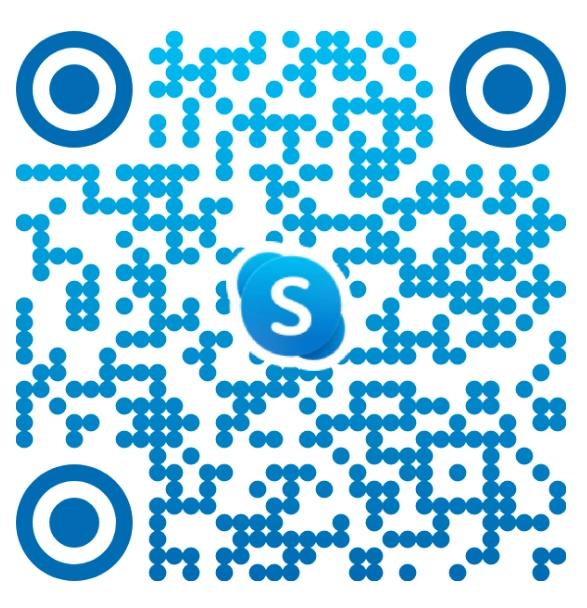Agentic RAG Unlocking Smarter Goal Driven AI Solutions for Your Business
In today’s fast-paced digital world, businesses need more than just reactive AI—they require intelligent systems that can understand goals, reason independently, and take meaningful actions to drive measurable outcomes. This is where Agentic RAG (Retrieval-Augmented Generation) steps in. It’s not just an evolution of traditional RAG; it’s a transformational approach that combines the power of intelligent agents with goal-driven reasoning to deliver smarter, context-aware results.
From automating complex decision-making processes to personalizing customer interactions at scale, Agentic RAG in AI is redefining how enterprises approach artificial intelligence. Whether you’re in customer support, knowledge management, or business intelligence, this technology enables next-level automation and insight delivery.
In this comprehensive blog, we dive deep into what is Agentic RAG, how it differs from traditional RAG, and how businesses can leverage it to gain a competitive edge. We’ll explore Agentic RAG architecture, its core components, real-world applications, and the future potential of Agentic AI use cases. If you’re looking to future-proof your business and unlock the full power of goal-driven AI using RAG, this guide is your starting point.
Introduction to Agentic RAG
Why Businesses Need Smarter AI
Businesses today face massive amounts of data and complex decision-making challenges. Traditional AI often falls short in providing goal-driven, context-aware solutions that can adapt dynamically. To stay competitive, companies require AI systems that don’t just retrieve data but actively plan, reason, and execute — this is where Agentic RAG comes in.
The Evolution from RAG to Agentic RAG
RAG (Retrieval-Augmented Generation) revolutionized natural language processing by combining language models with external knowledge retrieval. But as AI needs grew, the static nature of traditional RAG showed its limits. The Agentic Approach introduces AI agents that autonomously interact with data and tasks, enhancing RAG AI agents with goal orientation and multi-agent collaboration, leading to what we now call Agentic RAG.
What Is RAG (Retrieval-Augmented Generation)?
Traditional RAG Explained
RAG combines retrieval of relevant information from large datasets with generation capabilities of language models. When asked a question, a RAG system fetches useful documents or facts and generates responses grounded on that data. This improves accuracy and relevance compared to standalone language models.
Benefits and Limitations
While RAG improves information retrieval and reduces hallucinations, it is typically reactive and limited by static retrieval strategies. It lacks dynamic planning and multi-step reasoning, which are crucial for complex, goal-driven tasks in businesses.
What Is Agentic RAG?
Agentic RAG is an advanced form of Agentic Retrieval-Augmented Generation where multiple AI agents work together to perform retrieval, reasoning, planning, and execution. Instead of just fetching information, the system proactively drives toward specific goals, making AI truly autonomous and adaptable.
How It Improves Upon Standard RAG
By integrating agents like routing, query planning, and plan-and-execute modules, Agentic RAG Architecture supports complex workflows, multi-step reasoning, and context-aware decision-making—unlocking smarter and faster AI for business.
Also Read : Embedding Retrieval-Augmented Generation (RAG) in Agent-Orchestrated Systems
How Does Agentic RAG Work?
Agentic RAG (Agentic Retrieval-Augmented Generation) brings a new level of intelligence to AI systems by making them more goal-driven, adaptive, and autonomous. Unlike traditional RAG models that passively retrieve and generate content, Agentic RAG systems actively coordinate multiple AI agents to plan, retrieve, reason, and respond based on specific business goals.
Let’s break down the Agentic RAG workflow to understand how this system operates in real-world scenarios:
1. Input Interpretation
The process begins with understanding the user’s query or the business objective. Whether it’s a customer asking a complex question or an enterprise system analyzing operational data, the Agentic RAG system interprets the input using natural language understanding and context awareness. This is the stage where Agentic RAG in AI starts mapping the request to a goal.
2. Agent Coordination
Once the intent is clear, the system activates a set of AI agents, including RAG agents, query planning agents, and ReAct agents. These agents collaborate to break down the query into manageable parts, assign responsibilities, and coordinate actions. This modular approach ensures that the system can handle multi-step reasoning and adapt to varying complexity levels, reflecting a true agentic approach.
3. Goal-Oriented Retrieval
Unlike basic keyword retrieval, Agentic RAG architecture employs goal-oriented retrieval strategies. The agents access external and internal knowledge bases to fetch the most relevant, context-specific information aligned with the desired outcome. This stage leverages advanced retrieval-augmented generation techniques that help reduce hallucinations and improve output relevance.
4. Reasoning and Execution
After collecting the required data, the agents don’t just dump it into a model—they analyze, reason, and collaborate. This may include plan-and-execute agents evaluating multiple options or simulating outcomes before finalizing a response. The agentic framework in LLMs enables these steps by facilitating modular planning and execution.
5. Response Generation
Finally, the system synthesizes all actions into a refined output. Whether it’s a personalized recommendation, a customer support answer, or an internal business insight, the Agentic RAG workflow ensures responses are precise, context-aware, and aligned with business goals. This is where RAG AI applications demonstrate their value—delivering smart, scalable, and reliable results.
Goal-Oriented Retrieval Explained
In traditional RAG systems, retrieval is often based on broad keyword matching or surface-level query understanding. While this works for basic questions, it often returns irrelevant or low-precision results, especially in complex business environments.
Agentic Retrieval, however, transforms this process. It aligns the retrieval phase with the end goal of the user or system. This means that Agentic RAG doesn’t just fetch information—it selectively retrieves knowledge that’s intentionally linked to the desired outcome.
By leveraging goal-oriented RAG agents, businesses can significantly reduce noise in responses, cut down on processing time, and increase output accuracy. This approach is foundational to Agentic RAG for business use cases, where outcomes matter more than just facts.
How It Works:
- AI agents interpret the goal behind the query.
- They dynamically plan what type of data is needed.
- Retrieval is customized to serve the specific intent, not just match keywords.
This kind of context-aware AI retrieval ensures your system doesn’t just answer questions—it delivers the right answers that move the user or business forward.
Real-World Example:
Consider a customer support chatbot using Agentic RAG LangChain to dynamically retrieve product manuals, check previous tickets, and suggest personalized solutions without manual scripting.
Types of AI Agents in Agentic RAG Systems
| Agent Type | Role in Agentic RAG |
|---|---|
| Routing Agents | Direct queries to appropriate knowledge sources or agents |
| Query Planning Agents | Break down complex queries into manageable sub-queries |
| ReAct Agents | Combine reasoning and acting based on retrieved data |
| Plan-and-Execute Agents | Develop detailed action plans and carry them out |
Also Read : How Model Context Protocol Enhances Long-Context Retention in AI Models
Agentic RAG vs Traditional RAG
As businesses seek more intelligent and autonomous AI systems, understanding the differences between Agentic RAG and Traditional RAG becomes essential. While both fall under the umbrella of Retrieval-Augmented Generation, their capabilities, flexibility, and outcomes differ significantly.
Key Differences in Architecture and Behavior
| Feature | Traditional RAG | Agentic RAG |
| Retrieval Strategy | Static retrieval based on query | Dynamic, goal-driven retrieval |
| Reasoning Capability | Limited, mostly reactive | Multi-agent, proactive reasoning and planning |
| Autonomy | Minimal; relies on fixed pipelines | High autonomy; agents coordinate and adapt |
| Use Cases | Simple Q&A, information retrieval | Complex workflows, decision intelligence |
Side-by-Side Comparison: Traditional RAG vs. Agentic RAG
Traditional RAG operates like a well-indexed search engine. It’s designed to handle straightforward tasks such as answering FAQs, fetching static information, or summarizing documents. While it can retrieve relevant content based on the input query, it lacks the ability to reason, plan, or adapt to more complex requests. As a result, its performance plateaus when the task demands deeper context, decision-making, or multi-step processing.
Agentic RAG, by contrast, introduces a more intelligent and dynamic framework. It utilizes agentic AI models that work collaboratively—much like a team of specialists. These agents:
- Break down the task into subtasks
- Strategically plan how to solve it
- Retrieve only goal-specific data
- Adapt their approach based on the results
This agentic approach enables the system to not only respond, but also understand the intent, context, and nuances of the request. Whether it’s powering intelligent customer support, automating workflows, or enabling real-time decision-making, Agentic RAG delivers far more accurate, contextual, and personalized outputs.
In essence, while traditional RAG is suitable for simple, static tasks, Agentic RAG is built for modern businesses that demand goal-driven AI solutions with high autonomy, adaptability, and enterprise-grade intelligence.
Which One Is Better for Your Business?
If your business needs are limited to direct question-answering or retrieving predefined content, Traditional RAG might be enough.
But for enterprises focused on:
- Goal-driven AI using RAG
- Agentic RAG for business workflows
- Multi-step reasoning and dynamic task execution
- Integrating LLMs with multiple knowledge sources
… then Agentic RAG is the superior solution.
It not only boosts operational efficiency but also enables advanced applications like decision intelligence, personalized AI recommendations, and automated support systems—all aligned with business goals.
Business Applications of Agentic RAG
Agentic RAG is not just an upgrade from traditional RAG—it’s a strategic asset for businesses aiming to automate intelligently through AI business automation, deliver personalization at scale, and drive faster, smarter decisions. Here’s how enterprises can harness the power of Agentic Retrieval-Augmented Generation across critical use cases:
Customer Support
With RAG AI agents, businesses can build highly responsive, intelligent customer support systems that go beyond scripted responses. These agents:- Autonomously retrieve context-relevant solutions
- Understand user intent and history
- Escalate complex issues seamlessly to human agents
- Personalize responses based on prior interactions
The result? Reduced support costs, faster resolution times, and higher customer satisfaction—all powered by Agentic RAG for business.
Personalized Recommendations
By integrating Agentic Models with customer behavior data, businesses can deliver hyper-personalized and goal-aligned recommendations in real time. Whether in e-commerce, fintech, or SaaS platforms, Agentic AI use cases include:- Recommending products based on intent, not just history
- Adapting suggestions dynamically as user behavior changes
- Enabling adaptive content delivery across channels
This enhances user experience and boosts conversions and engagement.
Knowledge Retrieval
Large organizations often struggle with surfacing insights from massive, unstructured data pools. With Agentic RAG implementation, businesses can:- Extract actionable insights from internal documents, wikis, and CRMs
- Summarize key findings for leadership and teams
- Enable smarter internal search experiences with agent-based AI reasoning
This makes enterprise knowledge retrieval faster, more intuitive, and aligned with real business goals.
Decision Intelligence
Traditional analytics rely on static dashboards. Agentic RAG architecture, however, brings a new level of intelligence to the decision-making process. Businesses can:- Analyze structured and unstructured data in real time
- Use retrieval-augmented reasoning to simulate outcomes
- Generate goal-driven insights with minimal human intervention
This supports high-stakes decisions across operations, strategy, and customer experience—driving measurable business value.
Also Read : Integrating AI Agents with Legacy Systems Using API Wrappers and Interpreters
Benefits of Agentic RAG for Enterprises
Agentic RAG empowers enterprises to harness AI in a smarter, faster, and more reliable way. As an expert AI consultant services provider, we ensure its design delivers precise results while adapting seamlessly to complex business needs.
Faster Decisions, Better Accuracy
The multi-agent approach of Agentic RAG reduces response time and enhances accuracy by focusing retrieval on goal-relevant information. This targeted retrieval ensures that businesses get actionable insights exactly when they need them.
Enhanced Scalability and Flexibility
Thanks to its modular RAG Framework, businesses can scale AI capabilities seamlessly as data volume and task complexity grow. This flexibility allows organizations to expand AI integration across various departments without disruption.
Increased AI Autonomy and Adaptability
With agents like LangChain Agentic RAG, systems adapt dynamically to changing business contexts without constant human intervention. This autonomy frees up valuable resources and enables continuous AI-driven innovation.
Improved Multi-Step Reasoning
Agentic RAG Workflow supports reasoning over multiple steps and diverse information sources, ideal for complex enterprise challenges. This multi-step reasoning enhances decision-making by considering broader contexts and dependencies.
Reduced Hallucination and Noise in Outputs
By grounding responses in retrieved data and active agent verification, Agentic Retrieval-Augmented Generation minimizes AI hallucinations, ensuring trustworthy results. This leads to higher confidence in AI outputs across critical business operations.
Implementing Agentic RAG in Your Business
Successfully integrating Agentic RAG into your business requires careful planning, the right tools, and ongoing optimization. Hiring experienced AI developers, leveraging proven frameworks, and addressing common challenges can help maximize the benefits of this advanced AI approach.
Tools, Frameworks, and Integration
To implement Agentic RAG effectively, choosing the right tools and frameworks is crucial. Popular platforms like LangChain Agentic RAG offer a flexible and powerful foundation that allows businesses to develop customized, goal-driven AI solutions. Integrating these frameworks smoothly with your existing AI infrastructure and data sources ensures the system operates efficiently and delivers maximum value.
- Utilize APIs and SDKs designed specifically to support Agentic Retrieval-Augmented Generation workflows, enabling seamless communication between agents and data sources.
- Ensure compatibility with your enterprise data lakes, knowledge bases, and other repositories to provide agents access to up-to-date, relevant information.
- Choose scalable and modular architectures that can grow with your business needs, allowing easy updates and expansions without disrupting ongoing operations.
Common Challenges and Solutions
Implementing Agentic RAG can come with hurdles, but proactive strategies ensure success:
- Data Quality: Maintain clean, structured, and relevant data to empower retrieval agents with accurate information.
- Agent Coordination: Employ reliable orchestration tools to manage multiple RAG AI agents working together efficiently.
- Performance Optimization: Continuously monitor retrieval strategies and fine-tune system parameters to balance speed and precision.
Deployment Best Practices
Begin with pilot projects targeting high-value areas such as customer support or internal knowledge management to demonstrate quick wins. Use real-world feedback and analytics to iterate and improve, ensuring the Agentic RAG system delivers tangible ROI. To simplify this process, you can also take help from a reliable and experienced AI/ML development services provider.
- Prioritize use cases with clear, measurable goals
- Establish monitoring dashboards for AI performance and user satisfaction
- Plan for gradual scaling to cover more complex workflows and larger datasets
Also Read : Leading AI Development Companies Transforming the Future in 2025
Future of Agentic AI and Retrieval Systems
The future of AI is clearly moving toward smarter, more autonomous systems that understand context, plan ahead, and act proactively. Agentic RAG is at the forefront of this evolution, driving innovation in how AI assists businesses. Staying ahead of these trends can help organizations harness the full power of agentic retrieval systems to unlock new efficiencies and opportunities.
Trends to Watch
- Increasing Use of Context-Aware AI Agents: AI models are becoming better at understanding the user’s intent, environment, and goals, allowing more precise and relevant retrieval and responses.
- Growth in Open-Source Agentic RAG Models: Open-source frameworks and models are accelerating innovation, enabling businesses to customize and experiment with agentic AI without hefty costs.
- Advances in Retrieval-Augmented Reasoning and Planning: Enhanced algorithms allow AI agents to perform complex multi-step reasoning, plan actions dynamically, and deliver more intelligent outcomes.
AI Autonomy in the Enterprise
The rise of goal-oriented RAG agents means enterprises will rely increasingly on autonomous AI systems. These AI agents will manage complex workflows and support decision-making at scale with minimal human intervention. This shift promises to improve efficiency, reduce errors, and free human resources for higher-value tasks.
Why Choose Amplework for Agentic RAG Solutions?
Amplework is a prominent AI agent development services provider, known for its advanced Agentic RAG solutions that transform business operations through smarter, goal-driven AI. With deep expertise in Agentic RAG architecture and Agentic Retrieval-Augmented Generation, we design customized AI systems tailored to your unique business challenges.
Our skilled team uses popular frameworks like LangChain Agentic RAG to build scalable, flexible, and efficient multi-agent AI workflows. We ensure seamless integration with your existing data infrastructure and optimize retrieval strategies for faster, more accurate decision-making.
By choosing Amplework, you gain a partner committed to reducing AI hallucination, enhancing autonomy, and driving automation across complex workflows. Let us help you harness the power of Agentic RAG to boost innovation, efficiency, and sustainable growth in your enterprise.
Final Words
AI is rapidly transforming how businesses operate, and Agentic RAG is at the forefront of this change. By combining retrieval, reasoning, and action in a multi-agent system, Agentic RAG offers smarter, goal-driven AI solutions that automate complex workflows, improve accuracy, and speed up decision-making. This powerful approach helps businesses unlock new efficiencies and deliver better results faster.
If you want to stay competitive and future-proof your business, exploring Agentic RAG implementation is a smart move. Contact us to learn how our specialized services can help you harness this advanced technology to boost productivity, innovation, and growth. Let’s work together to take your AI capabilities to the next level.
Frequently Asked Questions (FAQs)
What is Agentic RAG and how does it differ from traditional RAG?
Agentic RAG stands for Agentic Retrieval-Augmented Generation. Unlike traditional RAG, which retrieves information based on a static query, Agentic RAG uses multiple intelligent AI agents that plan, reason, and retrieve data aligned with specific goals. This dynamic, goal-driven retrieval makes Agentic RAG more adaptable and effective for complex tasks, delivering smarter AI solutions.
How does Agentic Retrieval-Augmented Generation improve AI performance?
Agentic Retrieval-Augmented Generation enhances AI by combining retrieval, reasoning, and action within a multi-agent system. It focuses on fetching goal-relevant data, reducing irrelevant information and hallucinations. This leads to faster, more accurate responses and enables AI to handle multi-step workflows and decision-making, significantly improving overall performance.
What are the main business applications of Agentic RAG?
Agentic RAG is widely used in customer support for intelligent chatbots, personalized recommendations, knowledge retrieval from large databases, and decision intelligence. As a custom AI solutions provider, it leverages goal-driven AI agents to automate complex workflows, improve response accuracy, and offer actionable insights that boost business efficiency and customer satisfaction.
Is Agentic RAG better for enterprise AI solutions than traditional methods?
Yes, Agentic RAG is better suited for enterprise needs as it supports complex, multi-step reasoning and dynamic data retrieval. Traditional RAG is limited to straightforward queries, while Agentic RAG’s architecture allows for autonomous agent coordination, making it ideal for businesses requiring smarter, context-aware AI solutions.
How can Agentic RAG help automate and optimize business workflows?
Agentic RAG uses coordinated AI agents that dynamically plan and execute tasks based on goals. This enables automation of complex workflows such as customer service escalation, personalized recommendations, and decision-making support. The system adapts to changing business needs, reducing manual intervention and optimizing efficiency.


 sales@amplework.com
sales@amplework.com
 (+91) 9636-962-228
(+91) 9636-962-228





